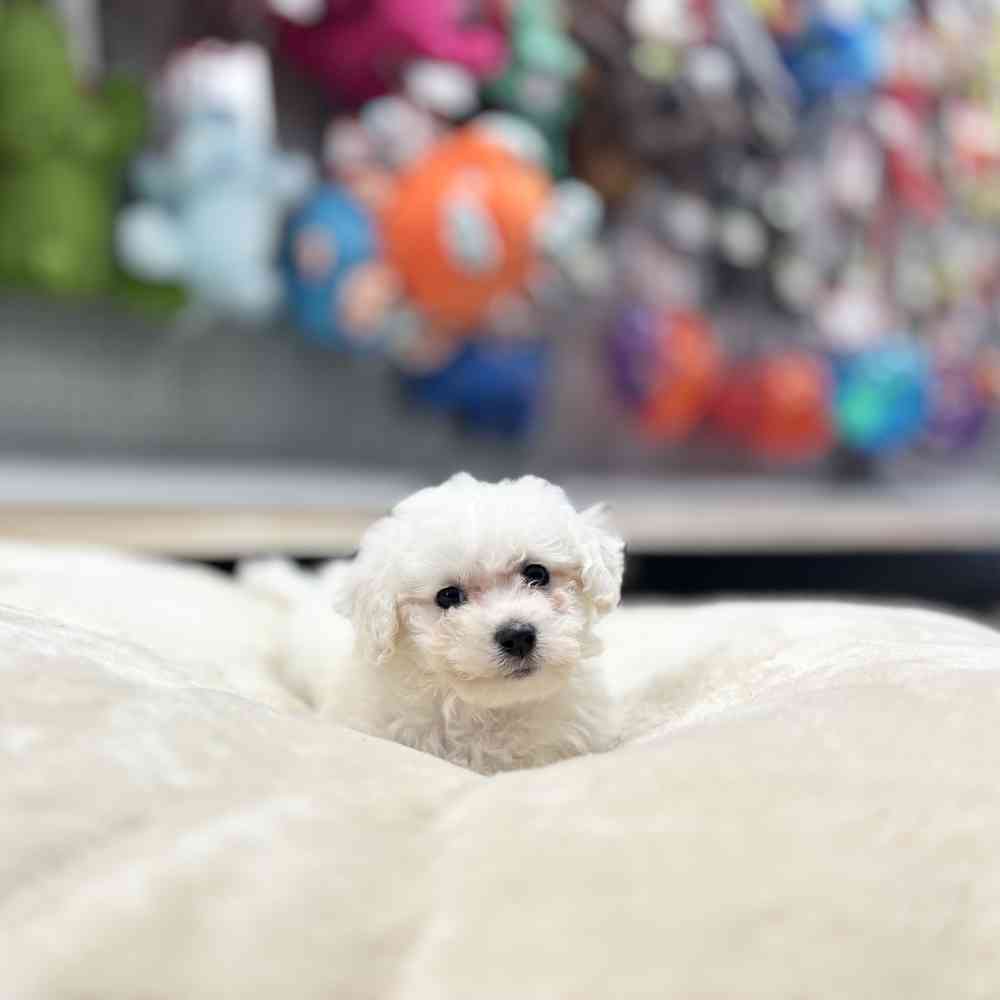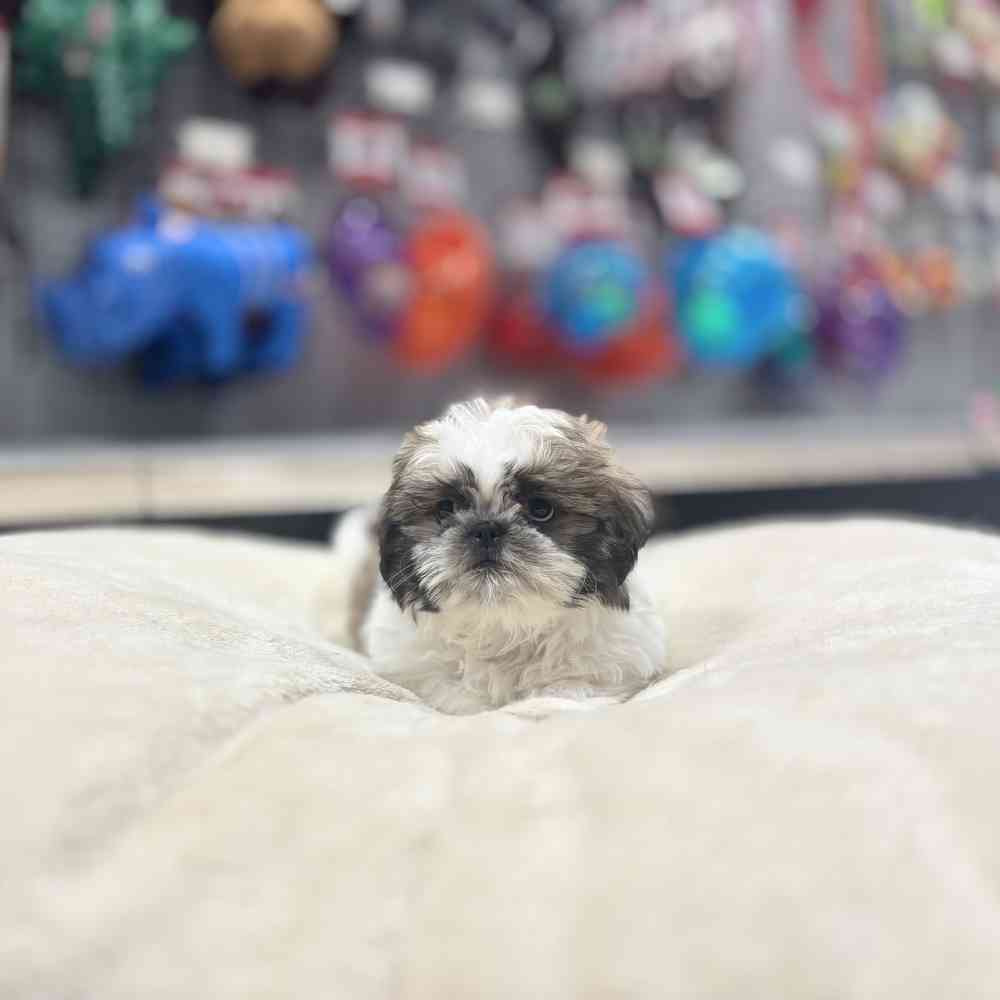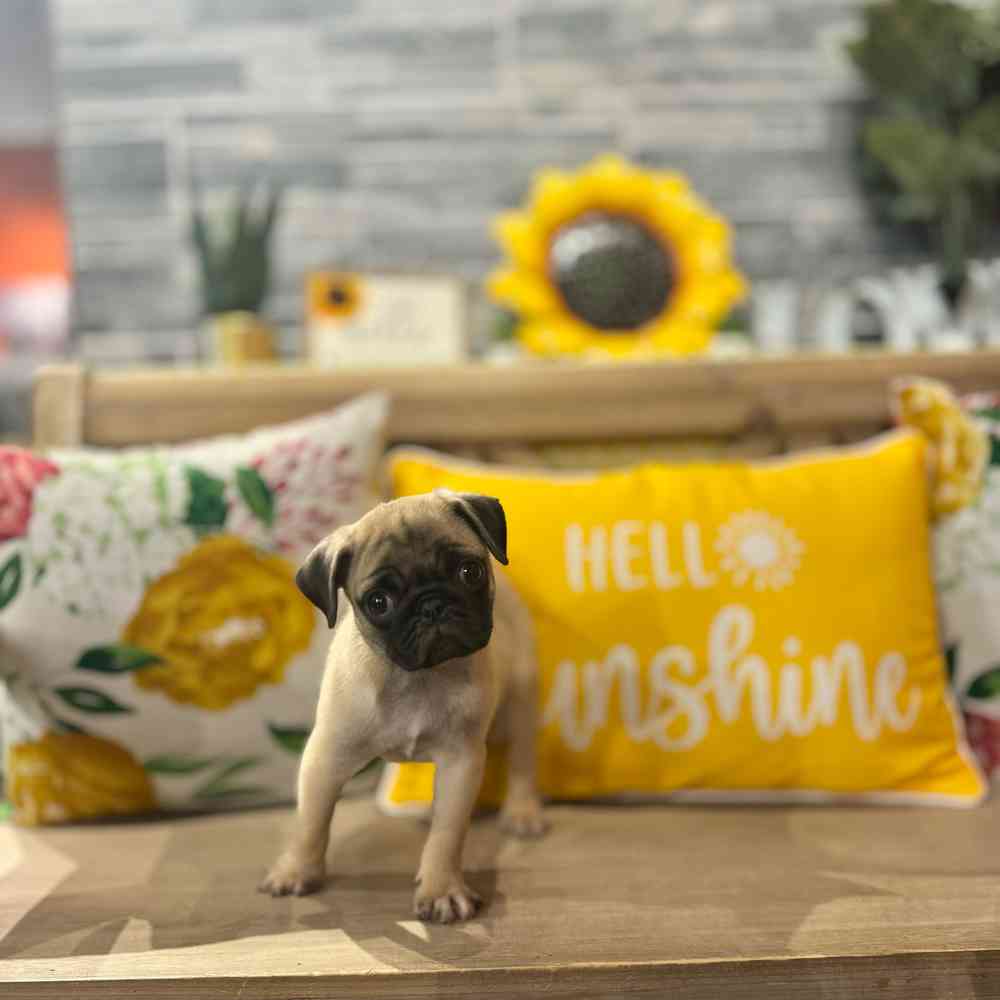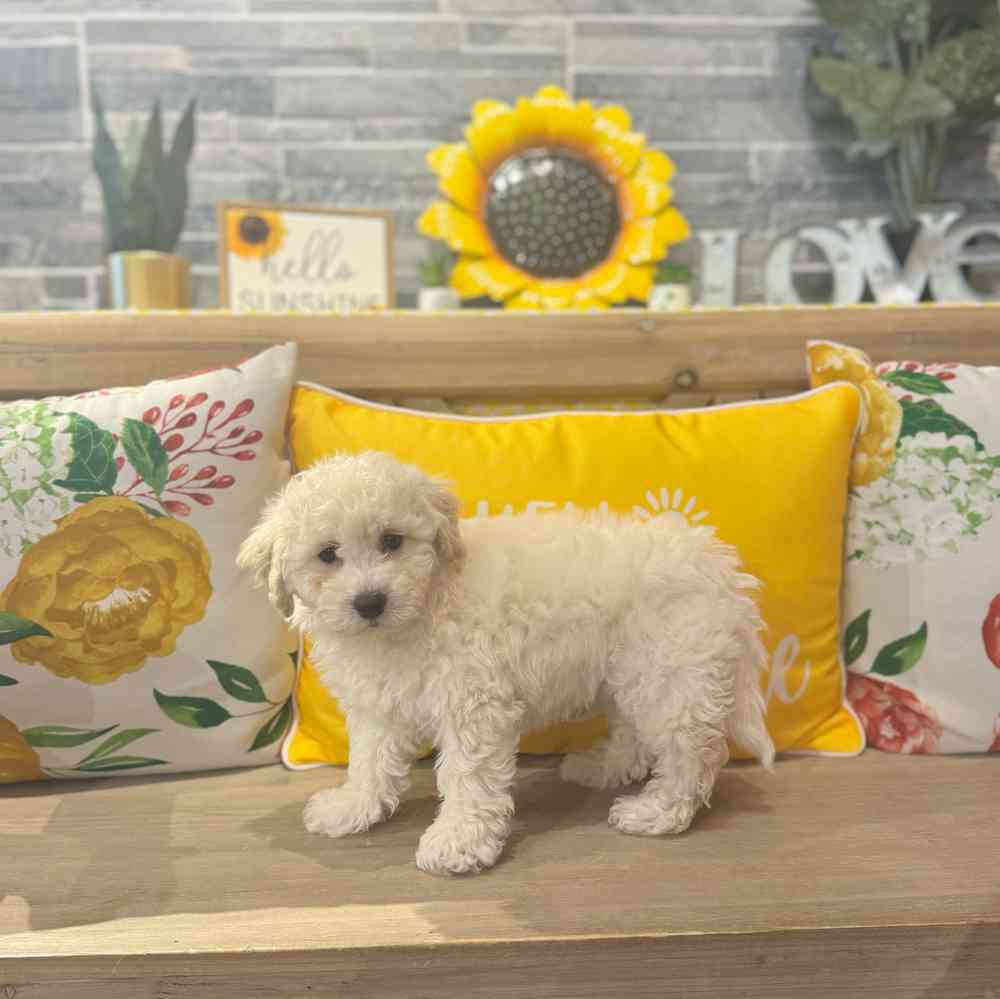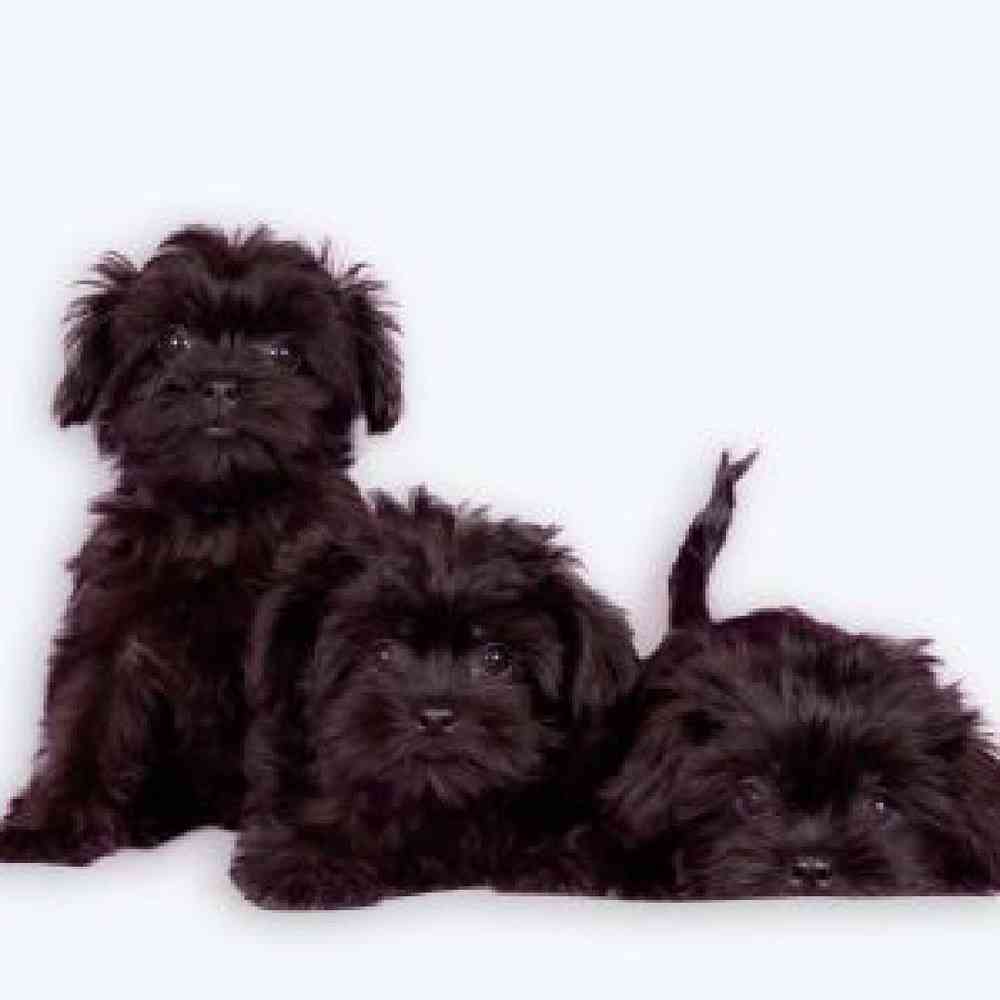
Apartment Friendly
Hypo Allergenic
AKC Registrable
Affenpinscher
Loyal, curious, and famously amusing, this almost-human toy dog is fearless out of all proportion to his size. As with all great comedians, it’s the Affenpinscher’s apparent seriousness of purpose that makes his antics all the more amusing.
Available Pups
Puppy Knowledge
Breed Standard
Size, Proportion, Substance
A sturdy, compact dog with medium bone, not delicate in any way. Preferred height at the withers is 9½ to 11½ inches. Withers height is approximately the same as the length of the body from the point of the shoulder to point of the buttocks, giving a square appearance. The female may be slightly longer.
Head
The head is in proportion to the body, carried confidently with monkey-like facial expression.
General Appearance
Eyes - Round, dark, brilliant, and of medium size in proportion to the head but not bulging or protruding. Eye rims are black. Ears - Cropped to a point, set high and standing erect; or natural, standing erect, semi-erect or dropped. All of the above types of ears, if symmetrical, are acceptable as long as the monkey-like expression is maintained. Skull - Round and domed,but not coarse. Stop -Well-defined. Muzzle - Short and narrowing slightly to a blunt nose. The length of the muzzle is approximately the same as the distance between the eyes. Nose - Black, turned neither up nor down. Lips - Black, with prominent lower lip. Bite - Slightly undershot. A level bite is acceptable if the monkey-like expression is maintained. An overshot bite is to be severely penalized. A wry mouth is a serious fault. The teeth and tongue do not show when the mouth is closed. The lower jaw is broad enough for the lower teeth to be straight and even.
Neck, Topline, Body
Neck - Short and straight. Topline straight and level. Body - The chest is moderately broad and deep; ribs are moderately sprung. Tuckup is slight. The back is short and level with a strong loin. The croup has just a perceptible curve. Tail may be docked or natural. A docked tail is generally between 1 and 2 inches long, set high and carried erect. The natural tail is set high and carried curved gently up over the back while moving. The type of tail is not a major consideration.
Forequarters
Front angulation is moderate.
Feet
Small, round, and compact with black pads and nails.
Hindquarters
Rear angulation is moderate to match the front. Hindlegs straight when viewed from behind. From the side, hindlegs are set under the body to maintain a square appearance. The length of the upper thigh and the second thigh are about equal with moderate bend to the stifle.
Coat
Dense hair, rough, harsh, and about 1 inch in length on the shoulders and body. May be shorter on the rear and tail. Head, neck, chest, stomach and legs have longer, less harsh coat. The mature Affenpinscher has a mane or cape of strong hair which blends into the back coat at the withers area. The longer hair on the head, eyebrows and beard stands off and frames the face to emphasize the monkey-like expression. Hair on the ears is cut very short. A correct coat needs little grooming to blend the various lengths of hair to maintain a neat but shaggy appearance.
Color
Black, gray, silver, red, black and tan, or belge are all acceptable. Blacks may have a rusty cast or a few white or silver hairs mixed with the black. Reds may vary from a brownish red to an orangey tan. Belge has black, brown, and/or white hairs mixed with the red. With various colors, the furnishings may be a bit lighter. Some dogs may have black masks. A small white spot on the chest is not penalized, but large white patches are undesirable. Color is not a major consideration.
Gait
Light, free, sound, balanced, confident, the Affenpinscher carries itself with comic seriousness. Viewed from the front or rear, while walking the legs move parallel to each other. Trotting, the feet will converge toward a midline as speed increases. Unsound gait is to be heavily penalized.
Temperament
Confident, Famously Funny, Fearless
Overview
Group
Toy
About
The Affen’s apish look has been described many ways. They’ve been called “monkey dogs” and “ape terriers.” The French say (“mustached little devil”), and Star Wars fans argue whether they look more like Wookies or Ewoks. Standing less than a foot tall, these sturdy terrier-like dogs approach life with great confidence. “This isn’t a breed you train,” a professional dog handler tells us, “He’s like a human. You befriend him.” The dense, harsh coat is described as “neat but shaggy” and comes in several colors; the gait is light and confident. They can be willful and domineering, but mostly Affens are loyal, affectionate, and always entertaining. Affen people say they love being owned by their little monkey dogs.
History
Though not classified as a terrier, the Affenpinscher was originally bred to work like one. His job was to exterminate rats and other pests in German stables of the 1600s. (The name Affenpinscher is German for “monkey dog” or “ape terrier.”) Eventually, Affens were brought indoors to rid the kitchen of mice. In time, they became dual-purpose dogs: ratters by day, and by night devoted bed-warming companions for the lady of the house. The Affen is thought to have been an influence on the development of such later European breeds as the Brussels Griffon and the Miniature Schnauzer. Clubs devoted to the breed sprung up around France and Germany in the late 1800s, and in 1936 the American Kennel Club welcomed Affens into its ranks. The immense charm that propelled them from stable to kitchen to boudoir has made Affens a force in the show ring. In 2013, an Affen named Banana Joe delighted America by winning the Westminster Kennel Club’s Best in Show. Affens have also succeeded in agility, obedience, and therapy. The grit that made them such effective ratters has never left the breed. Writer Desmond Morris reports that during a trip to Alaska he witnessed a tiny but fearless Affenpinscher chase off a grizzly bear!
Standard
The Affenpinscher is a balanced, wiry-haired terrier-like toy dog whose intelligence and demeanor make it a good house pet. Originating in Germany, the name Affenpinscher means “monkey-like terrier.” The breed was developed to rid the kitchens, granaries, and stables of rodents. In France the breed is described as the “Diablotin Moustachu” or moustached little devil. Both describe the appearance and attitude of this delightful breed. The total overall appearance of the Affenpinscher is more important than any individual characteristic. He is described as having a neat but shaggy appearance. Size, Proportion, Substance: A sturdy, compact dog with medium bone, not delicate in any way. Preferred height at the withers is 91⁄2 to 111⁄2 inches. Withers height is approximately the same as the length of the body from the point of the shoulder to point of the buttocks, giving a square appearance. The female may be slightly longer.
Nutrition
The Affenpinscher should do well on a high-quality dog food, whether commercially manufactured or home-prepared with your veterinarian’s supervision and approval. Any diet should be appropriate to the dog’s age (puppy, adult, or senior). Some dogs are prone to getting overweight, so watch your dog’s calorie consumption and weight level. Treats can be an important aid in training, but giving too many can cause obesity. Learn about which human foods are safe for dogs, and which are not. Check with your vet if you have any concerns about your dog’s weight or diet. Clean, fresh water should be available at all times.
Grooming
The Affenpinscher’s medium-length, wiry coat should be groomed twice a week, first with a brush and then with a metal comb. Any mats should be pulled apart with the fingers. The hair on the head is usually brushed forward over the face, and then an inverted V-shape is cut to expose the eyes. Similarly, the hair on the bridge of the nose is trimmed into a fan shape to keep the eyes clear. The Affen’s coat does not grow quickly, so a trimming a pet Affen every few months should suffice. The breed’s national parent club, the Affenpinscher Club of America, provides a detailed grooming guide. Affens should also have their nails trimmed and their teeth brushed regularly.
Exercise
One of the attractions of the toy breeds is that their small size makes them ideal apartment dogs. While Affenpinschers can be perfectly happy living in close quarters, the breed is classified as “moderately active,” and as such, they do need exercise. Indoor play, both with his owner and just between himself and a toy, can be enough to make up a large chunk of an Affen’s exercise regimen. Even so, a brisk walk once or twice a day is required. In addition to providing exercise, these walks give the Affen a chance to socialize both with people and other dogs.
Training
Affenpinschers are courageous, bold, and often feisty. Basic obedience training is recommended. The breed has an undeserved reputation as being difficult to train because Affenpinschers are independent minded and can be stubborn. The key is that they are very intelligent and generally eager to please the humans they have bonded with. Keep in mind that they are easily bored and tend to lose interest during long training sessions. Shorter, more frequent sessions with a trainer who has experience working with toy breeds are usually quite successful.
Health
Affenpinschers are generally healthy dogs, and responsible breeders will screen their stock for health conditions such as luxating patella, heart anomalies, vision problems, and hip dysplasia. Like other shorter-faced breeds, Affens can experience breathing problems during hot weather if they are permitted to overheat and then have difficulty panting in order to lower their body temperature, as dogs don’t sweat to keep cool.




